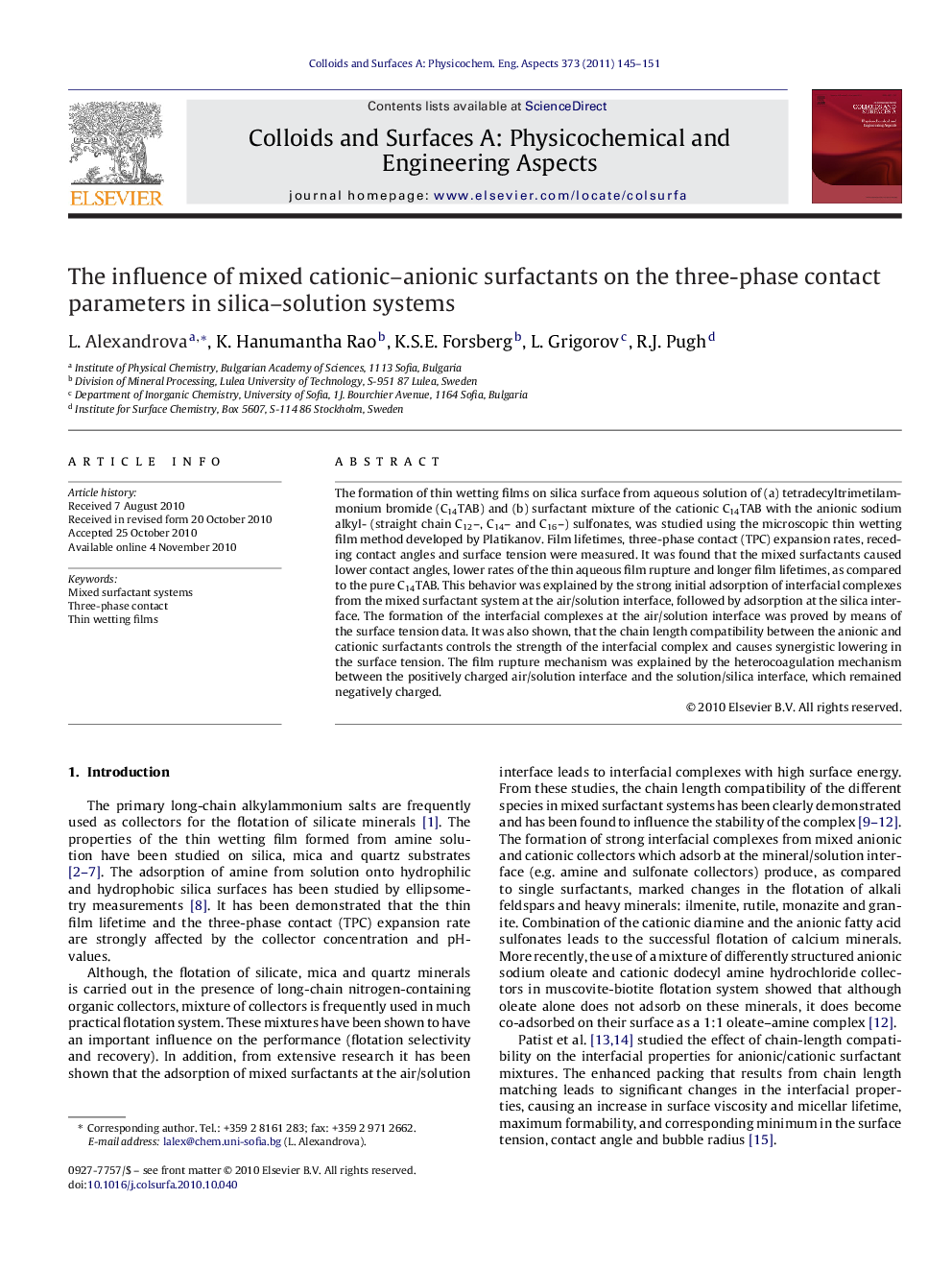| Article ID | Journal | Published Year | Pages | File Type |
|---|---|---|---|---|
| 595098 | Colloids and Surfaces A: Physicochemical and Engineering Aspects | 2011 | 7 Pages |
The formation of thin wetting films on silica surface from aqueous solution of (a) tetradecyltrimetilammonium bromide (C14TAB) and (b) surfactant mixture of the cationic C14TAB with the anionic sodium alkyl- (straight chain C12–, C14– and C16–) sulfonates, was studied using the microscopic thin wetting film method developed by Platikanov. Film lifetimes, three-phase contact (TPC) expansion rates, receding contact angles and surface tension were measured. It was found that the mixed surfactants caused lower contact angles, lower rates of the thin aqueous film rupture and longer film lifetimes, as compared to the pure C14TAB. This behavior was explained by the strong initial adsorption of interfacial complexes from the mixed surfactant system at the air/solution interface, followed by adsorption at the silica interface. The formation of the interfacial complexes at the air/solution interface was proved by means of the surface tension data. It was also shown, that the chain length compatibility between the anionic and cationic surfactants controls the strength of the interfacial complex and causes synergistic lowering in the surface tension. The film rupture mechanism was explained by the heterocoagulation mechanism between the positively charged air/solution interface and the solution/silica interface, which remained negatively charged.
Graphical abstractFigure optionsDownload full-size imageDownload as PowerPoint slideResearch highlights▶ The mixed surfactants caused lower contact angles. ▶ The mixed surfactants caused lower rates of the thin aqueous film rupture. ▶ The mixed surfactants caused longer film lifetimes. ▶ The chain length compatibility controls film rupture and dewetting of the film.
